Training school – Portable, low-cost, easily accessible and easy to use tools to document and analyse Cultural Heritage artefacts
14 - 15 June 2021 - Ljubljana, Slovenia
Location: National Museum of Slovenia, Ljubljana, Slovenia
Start and end date: 14/06/2021 to 15/06/2021
Report
The training school took place over two days in June at the National Museum of Slovenia. The event was international, in terms of both trainers and trainees. 15 trainees of various (in most cases scientific) backgrounds and experience with cultural heritage analyses attended.
The training school started with an introductory session on analytical aspects of cultural heritage, with the first three speakers from the National Museum of Slovenia. First Dr Eva Menart, leader of the Task force: Cultural Heritage Applications, presented the COST action PortASAP and TF: CHA, then then Dr Tomaž Lazar, a historian and curator at NMS, described some interesting examples of scientific analyses on museum objects, and finally Nataša Nemeček, a senior conservator at NMS, spoke about the role of analyses in conservation-restoration.
In the second part of the introductory session, the two external trainers presented the techniques and instrumentation they developed and will be demonstrating during the TS. The trainers were Prof Christian Degrigny from Haute Ecole Arc Conservation-restauration in Neuchâtel, Switzerland, co-leader of TF: CHA, and Dr Jakub Sandak, researcher at InnoRenew CoE in Izola, Slovenia.
The morning session was concluded with a visit to Museum’s storage depots, where the participants had a chance to see parts of the museum and its collection that are normally closed to the public, discuss interesting objects and analytical findings that informed their interpretation and/or conservation treatment, and observe and discuss environmental monitoring.
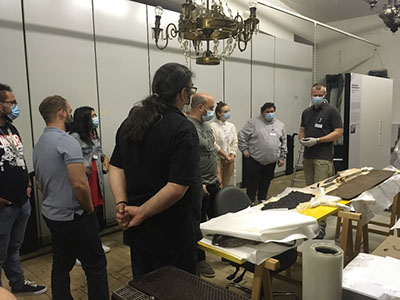
Visiting the storage depot, where Dr Tomaž Lazar, curator of weaponry and combat equipment, is showing examples of analysed objects.
The afternoon session of the first day was led by Dr Jakub Sandak. He presented several examples of open source Arduino-based instruments, with the main focus being a setup for monitoring air and rainwater quality. The participants were shown how to build a sensor setup had a chance to test it. The day was concluded with a visit to Ljubljana centre, where participants could observe air and rain quality monitoring using dr Sandak’s sensor setup in-situ. It was installed to monitor environmental conditions surrounding a famous bronze statue, depicting the most famous Slovenian poet France Prešern.
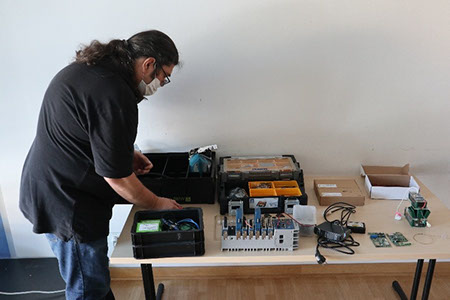
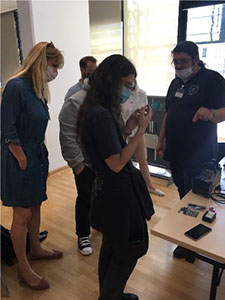
Dr Sandak with his instrumentation components for low-cost sensing options, which the participants examined with interest.
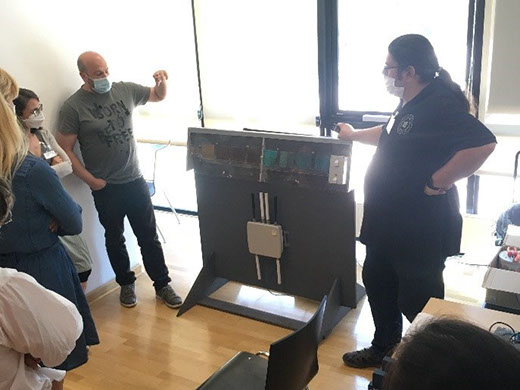
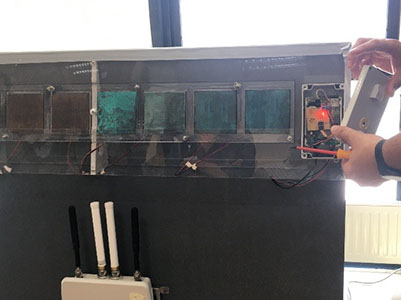
Dr Sandak’s setup for air and rain quality monitoring.
The second day of the TS was led by Prof Degrigny and dedicated to metal objects. The morning session was focused on simple tools to identify metals. Prof Degrigny presented the tool MiCorr and the participants were trained on how to use it. They were then given access to real objects from the museum’s collection (following strict instructions on how to handle them safely), and attempted to identify the materials using MiCorr.
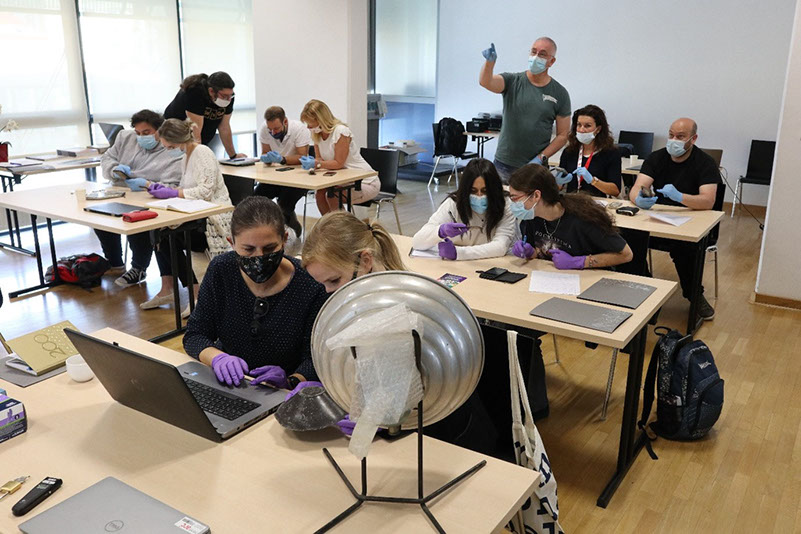
Participants inspecting museum metal objects closely, while using MiCorr.
The morning session was concluded with a visit to the Museum’s permanent exhibition.
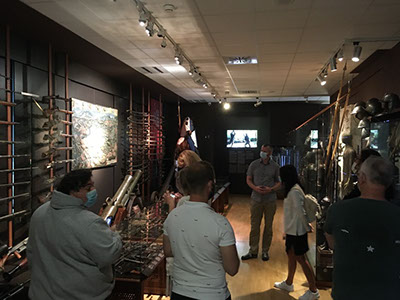
Dr Lazar’s guided tour of the Museum’s exhibition on arms and armour.
In the afternoon session, Prof Degrigny demonstrated two electrochemical tools for metal analysis, DiscoveryMat and the Pleco. While DiscoveryMat can be used as a low-cost alternative to X-ray fluorescence instruments for metal identification, the Pleco is used to identify corrosion layers, forming on metal objects. It can also be used to identify parameters for electrolytic consolidation of the objects and to do the actual cleaning/consolidation. Participants could test both techniques on real museum objects.
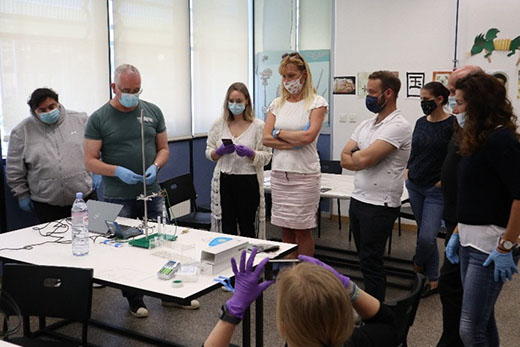
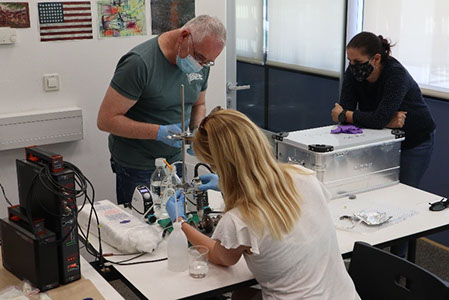
Prof Degrigny explaining DiscoveryMat and one of the TS participants using the Pleco.
The Training school was for many participants one of the first live events since the start of the pandemic. All safety precautions were in place, with all participants having to be either vaccinated or tested. Despite uncertain times somewhat hindering the organisation, the organisers received very positive feedback from attendees and everyone involved agreed the opportunity to be able to learn and discuss in person was welcome.
The organisers gratefully acknowledge the support of the COST action PortASAP and its chair Dr Guillaume Erny.
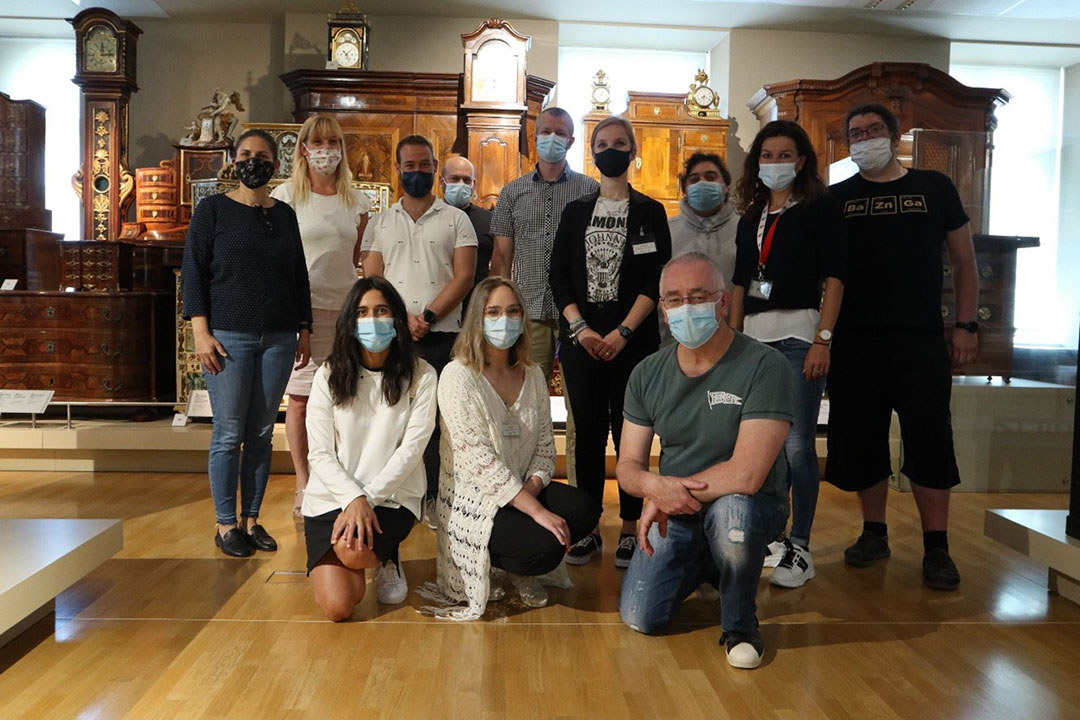
Training school participants (top left to right: Nataša Nemeček, Dr Lara Mikac, Daniel Kaufman, Luka Škrlep, Dr Tomaž Lazar, Dr Eva Menart, Dr Claudio Larosa, Lea Legan, Dr Jakub Sandak, bottom left to right: Dr Oihana Gordobil, Ana Sterle, Prof Christian Degrigny).
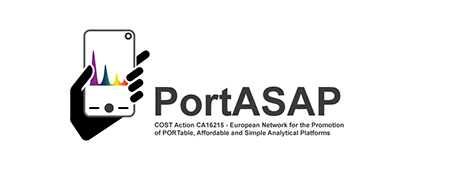
.png?crc=4271212285)



